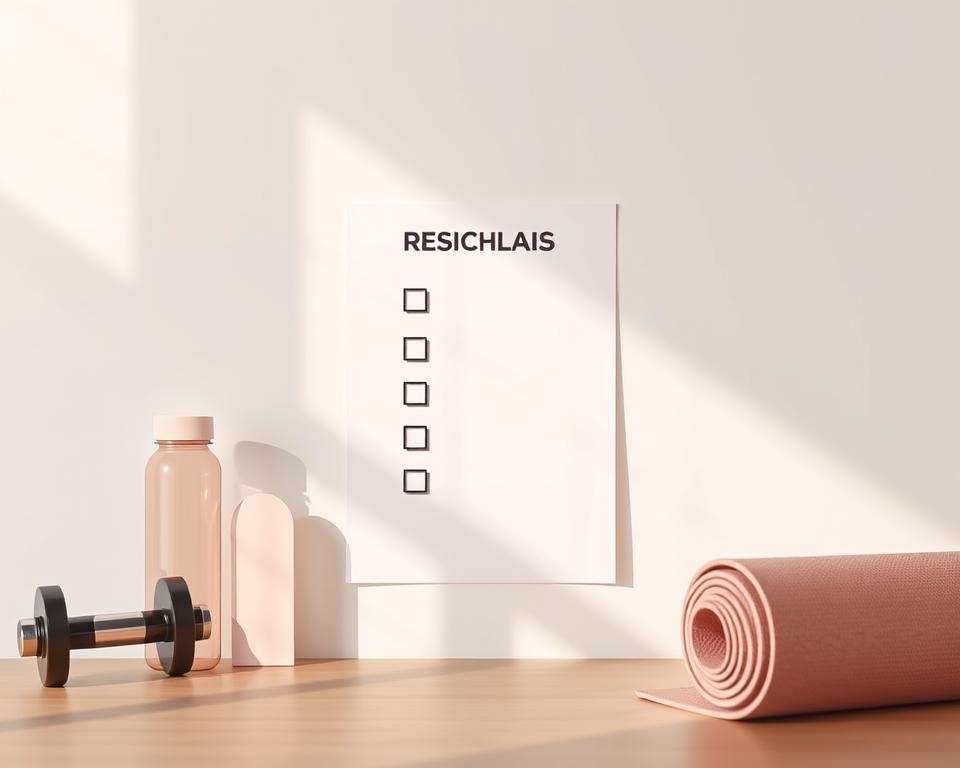Anúncios
Are you sure your routine is helping your goal, or could one tweak change everything?
This list starts simple and stays practical. You’ll get a clear guide to the most common workout pitfalls so you protect your health and make steady progress. Many experts note that consistent, balanced plans and good technique cut injury risk and boost training efficiency.
We’ll explain why each error happens, how it affects your body, and one small change you can test in your next session. Expect evidence-informed tips from sources like Harvard Health and Cleveland Clinic, presented in plain language.
This approach favors steady results over hype. You’ll find quick checklists and simple do-this-instead steps so you know what to change first at the gym. When you need a tailored plan, consider consulting a certified pro for personalized guidance.
Introduction: Why Common Workout Errors Stall Progress
Small changes to how you train can unlock steady gains and fewer setbacks. This guide points out the familiar pitfalls that drain energy, slow progress, and increase injury risk. Use this approach as a quick reference to make one practical change at a time.
Anúncios
What this list covers and how to use it: You’ll learn how to spot and correct common workout errors with one clear step you can try this week. The items cover planning, exercise selection, form, recovery, and how to progress weight safely without burning out.
Evidence-informed, not medical advice: Tips draw on guidance from Harvard Health Publishing, Cleveland Clinic (2024), and UCLA Health (2023) about warm-ups, variety, progressive overload, and respecting recovery. These are educational notes and do not replace care from a licensed clinician or certified coach.
- Skim the list for the issue that sounds familiar.
- Read “why it happens,” then apply one small step first.
- When pain, dizziness, or unusual symptoms occur, pause and consult a professional.
Skipping Warm-Ups and Cooldowns Reduces Performance and Raises Risk
Begin with this: a small investment of minutes before and after exercise yields clearer form and faster recovery. A proper warm-up raises blood flow and gently lifts your heart rate so muscles and joints are ready for work.
Anúncios
Warm-up basics
Spend 5-10 minutes on light cardio, then add dynamic moves. Try leg swings, arm circles, and bodyweight squats to wake up major muscles. These exercises prime your nervous system and improve movement quality, which lowers injury risk as intensity rises.
Cooldown essentials
Finish with a few minutes of slower breathing and gentle stretches for the hamstrings, quads, calves, and chest. This helps your body return toward baseline and supports recovery after a hard session.
Applied example: quick full-body sequence for busy days
Use this 7-minute routine: 3 minutes brisk walk, 2 minutes mobility flow, 2 minutes activation (glute bridges and scapular push-ups). Repeat the drills that feel best before similar training days to build a reliable routine.
“Don’t skip priming — it makes your main sets safer and more productive.”
If you feel light-headed or sharp pain, stop and reassess. When symptoms persist, consult a clinician or certified coach before your next workout to protect your body and progress safely.
Neglecting Proper Form and Technique Undercuts Results
When your setup and posture are right, you target the intended muscles and cut down on nagging pain. Good technique spreads load across your joints so you can build strength without overloading your back or shoulders.
Why it matters: Correct movement focuses effort on the target muscle and lowers stress on vulnerable areas. That means better strength gains and fewer interruptions from an injury.
Practical fixes you can try
- Film one set from the side and front to check alignment and depth against a trusted coaching demo.
- Use mirrors for immediate cues on knee tracking, hip level, and shoulder position, then practice without them to build internal control.
- Ask a certified coach at the gym for spot feedback on squat, hinge, push, pull, and carry patterns.
- Drop the load if technique slips; clean reps at a lower level beat sloppy heavy sets every time.
“If pain or persistent movement limits remain, consult a physical therapist to assess mechanics and guide return-to-training.”
Overtraining and Under-Recovery: When “More” Becomes a Plateau
When you train without enough rest, steady progress can stall and energy levels fall. This happens when stress outweighs your body’s ability to rebuild.
Watch for early signs: persistent fatigue, declining performance across multiple workouts, poor sleep, and irritability. These often signal you need more recovery time rather than harder sessions.
Smart recovery strategies
Plan 1–2 full rest days each week and use active recovery—easy walking, light mobility, or gentle cycling—on other low-intensity days to promote blood flow without adding strain.
- Keep weight increases modest and gradual to protect your joints and muscles.
- Aim for 7–9 hours of sleep to support hormones and tissue repair.
- Support recovery with a consistent diet that supplies protein, carbs, and fluids.
“Training is stress; recovery is where you turn stress into gains.”
If you notice sharp pain, swelling, or stalled lifts over several sessions, scale back and consult a qualified clinician before resuming heavy training. Use a simple log to track workload and how you feel; when performance dips, schedule a lighter week to rebound.
Focusing Only on Cardio or Only on Strength Creates Imbalances
If your weekly plan skews to one method, you may miss gains that come from a balanced mix of endurance and resistance. A single approach can leave weaknesses in mobility, power, or stamina that affect daily life and sports.
Balanced routine: endurance, strength, and flexibility in one week
Build a week that trains endurance, strength, and flexibility so you develop a well-rounded base and see better results.
Keep sessions focused: pair one cardio block with a short core set, one compound lifting day, and one mobility day to spread stress and aid recovery.
Example split: mixing bike intervals, compound lifts, and mobility
- Day 1: bike intervals (6 x 60 seconds) + core.
- Day 2: compound lifts — squat, row, push (progress weight gradually).
- Day 3: mobility or yoga, 10–15 minutes focused on range of motion and proper form.
- Day 4: tempo run or brisk incline walk for steady endurance.
- Day 5: full-body strength (hinges, carries) and light conditioning; weekend: active play or hike.
“Rotate implements and track one variable per session to keep progress clear and safe.”
Ignoring Pain or Discomfort Can Turn a Twinge into Time Off
Listening to how your body talks back during training saves time off later. Mild soreness after a new session is common. It usually fades in 24–48 hours as you adapt.
But not all discomfort is the same. Treat sharp, stabbing, or joint-focused sensations as a clear stop signal. These signs often mean you should reduce the load or change the movement.
Use a simple traffic-light check:
- Green: low discomfort (under 3/10) that fades — carry on with caution.
- Yellow: moderate (4–5/10) — scale back, monitor the pattern and volume.
- Red: intense or sharp (6+/10) — stop and reassess before you continue.
If a specific move consistently causes the same pain, modify range of motion, lower weight, or swap the pattern while you troubleshoot. Early attention often shortens time away from training and lowers the risk of a bigger injury.
Keep simple notes about what you did, footwear, and the level of effort. If symptoms persist, consult a physical therapist to find the safest way back to your routine.

Poor Nutrition and Hydration Sabotage Energy and Recovery
What you eat and drink around training directly shapes how hard you can work and how fast you bounce back.
Fueling basics
Build most meals around a clear protein plus carb pattern. Choose eggs, yogurt, fish, poultry, or legumes to help muscle repair, and add rice, oats, fruit, or potatoes to power higher-intensity sessions.
Include healthy fats like olive oil, nuts, or avocado for overall diet quality and long-term health.
- Spread protein across the day to support repair and steady energy.
- Eat a mixed meal 2–3 hours before training, or a light snack 30–60 minutes out if you have limited time.
Hydration habits
Start with a simple fluid baseline each day and adjust for heat, altitude, and sweat rate. Notice thirst and urine color to guide small tweaks.
- Use electrolytes for long, sweaty sessions.
- Top up fluids in the 30 minutes before exercise and sip during longer work.
Real-world example: simple pre- and post-workout options
Quick pre: Greek yogurt with fruit and a handful of nuts gives carbs and protein in about 10 minutes of prep. Post: lean protein plus carbs, like a chicken-and-rice bowl with veggies, aids recovery.
On busy days, 10 minutes of prep—cooking extra protein or portioning snacks—keeps your energy steadier across the day and helps your next session feel better.
“Small, consistent fueling steps often beat one big change when it comes to steady energy.”
Not Setting Clear, Realistic Goals or Tracking Progress
Clear targets turn vague intentions into practical steps you can test each week. Name one specific goal, set a deadline, and you’ll know if your plan is working.
From vague intentions to measurable steps
Turn broad aims into a single, timed goal. Example: add 5 pounds to your back squat in 4–6 weeks.
Break that into weekly steps you control: train 3x/week, hit a protein target, or add one set when form is solid.
Tracking tools: training logs, photos, and simple performance metrics
Track basics after each workout: exercise, sets, reps, weight, RPE, and brief notes on form or how you felt.
Use quick photos or simple tests every few weeks — plank time, push-up count, or a 1-mile walk pace — to spot real progress.
- Schedule short review sessions to decide what stays and what changes.
- If results stall, change one variable at a time so you know what helped.
- When in doubt, a certified coach can set realistic targets and adjust training to your life.
“Small, measurable steps plus consistent logging reveal real trends over time.”
Doing the Same Routine Every Day Leads to Plateaus
When every workout follows an identical script, your body quickly learns the pattern and progress slows. Repeating the same routine every day can blunt gains and raise overuse injury risk in the same joints and muscles.
Why variation helps: different stimuli recruit different systems. Changing intensity, movement patterns, and volume forces adaptation and keeps progress steady without dramatic leaps.
Variation that works: HIIT, functional training, and periodization
Use a simple periodization plan: alternate a heavier week with a lighter week, shift rep ranges every few weeks, and rotate assistance exercises to protect your back and shoulders.
Mix modalities across a week. Add one HIIT day, one steady endurance day, and two strength days so different muscles and energy systems get trained without constant fatigue.
- Functional training: carries, step-ups, and sled pushes build strength you use in sports and daily life.
- Change angles: swap barbell to dumbbell, vary grips and stances to expose new movement paths.
- Measure progress: track one anchor (like a squat 5RM or 1K row time) to ensure your approach yields forward momentum.
“Planned, modest change beats random overhauls—keep jumps in weight small and technique first.”
Using the Wrong Gear or Footwear Increases Injury Risk
Using ill-suited shoes or apparel quietly raises your chance of injury and nagging pain over time. Small gear choices change how forces travel through your ankles, knees, hips, and back. Pick practical items that protect the body and make movement safer.
Choosing moisture-wicking apparel and terrain-appropriate shoes
Dress for the conditions. Choose moisture-wicking shirts and socks to keep skin dry and reduce chafing during longer sessions. Layer breathable fabrics in cold or wet weather so temperature stays steady and comfort improves.
- Match shoes to surface: road trainers for pavement, trail shoes for uneven ground, and stable soles for heavy gym lifts.
- Fit and timing: try shoes later in the day when feet swell; aim for a thumb’s width at the toe and a locked heel.
- Replace and upgrade: worn midsoles or uneven tread raise impact and can increase risk injury to joints and provoke pain up the chain.
- When to get help: use supportive insoles only if a clinician or fitter recommends them, and seek a professional fit if foot or lower-leg pain continues.
“Good gear reduces slips, blisters, and unnecessary strain—treat it as part of your safety plan.”
fitness mistakes avoid: A Practical Weekly Framework
A simple weekly plan helps you balance work and recovery. Use a repeatable layout so each session has purpose and you preserve energy across the week.
Sample 5-day outline:
- Mon — full-body strength (focus on 3–4 big exercises).
- Tue — intervals (bike or rower; 20–25 minutes of work).
- Wed — mobility + core (short session to restore range of motion).
- Thu — full-body strength (repeat with small progressions).
- Fri — easy cardio or active recovery; weekend: hike or rest.
For 30–45 minutes, structure the session: 5–8 minutes warm-up, 20–25 minutes main work, 5–10 minutes accessories or mobility, finish with a cooldown. This keeps time efficient and preserves proper form on top sets.
- Progress safely: leave 1–2 reps in reserve and increase load slowly to build muscle.
- Regulate intensity: use heart rate or perceived effort on intervals so you recover between efforts.
- Prep essentials: a small snack and water bottle before you start helps nutrition and energy.
Keep a short checklist each session: warm-up done, proper form on top sets, cooldown started, notes logged. If life gets tight, do a minimum effective session: one compound lift, one accessory, and a 5-minute mobility finisher.
“Consistent short sessions add up—plan each week so your workouts are purposeful and sustainable.”
Conclusion
Finish strong: pick one small tweak to your workout this week and test it for a few sessions. Small, steady changes drive real progress and protect your body over many days.
Focus on the basics: warm up, use sound technique, cool down, and keep nutrition, sleep, and stress in the mix. These simple habits support long-term health and help protect your back, knees, and shoulders.
Track what you do and review your log every few weeks. When uncertainty or pain appears, choose the safer way and consult a certified trainer or healthcare professional for tailored guidance.
Keep learning, stay consistent, and be kind to yourself. That steady path is the clearest way to better workouts and lasting progress.



